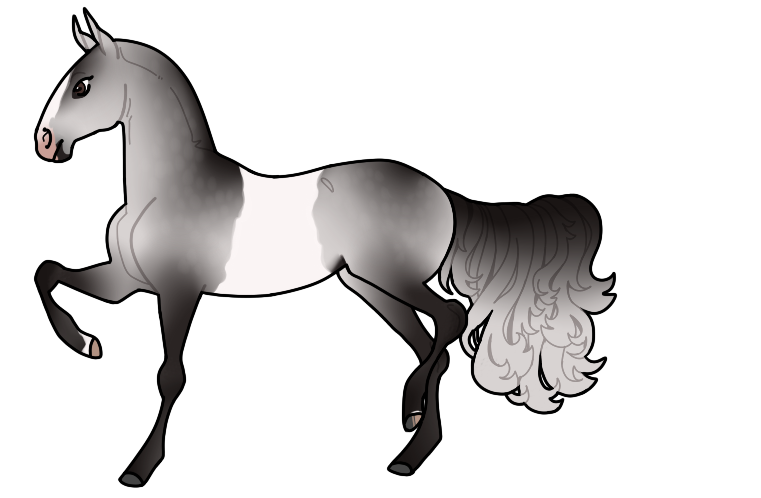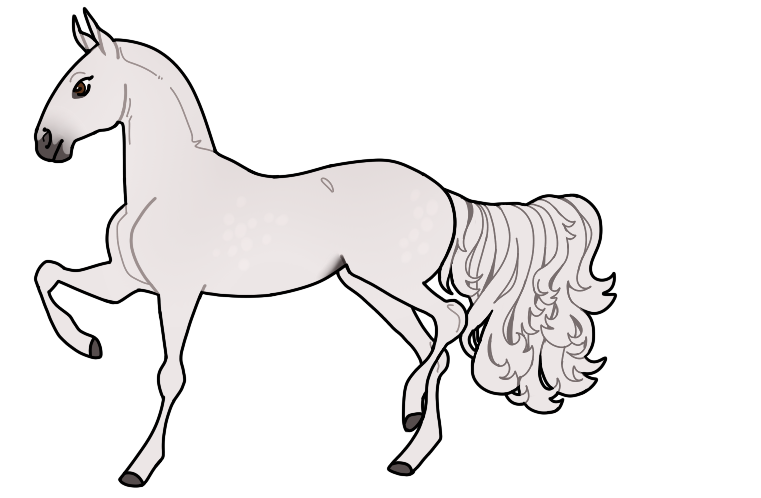Design Guide
Grey (Common)
Category: Markings/Modifiers
Genetics: G_
Locus: G
Overview:
- Greys are born as their base color and will progress toward white throughout their lives.
- You may design your horse at any stage of grey as long as it meets the minimum.
- Body greying should originate from the neck/throat, flank, armpit, muzzle, and eye areas and spread from there.
- Mane/Tail: Gradually lightens with the coat over the horse's lifespan; lightest at the ends.
- Skin: No effect
- Eyes: No effect
Variations:
- Fleabitten Grey: Body is lightened to white or near-white, with small "fleabite" spots dispersed across the entire body. Fleabites should be the base color, and should be present across the entirety of the coat, except where covered by white markings.
- Bloodmarked: Can be added to any form or stage of grey. Bloodmarks are patches of color unaffected by grey, most often seen on Fleabitten Grey as an area of concentrated fleabites. These patches will show the base color beneath with no lightening. Edges should be textured.
Interactions:
- Rift: Will gradually desaturate Rift throughout the lifespan, but does not always cause it to lighten/grey out.
Range:
- Minimum: Must express obvious lightening in at least 2 of these areas: neck, flank, armpit, face (muzzle/eyes).
- Maximum: Body, mane, and tail are completely white; skin and hooves will remain consistent throughout lifespan.
1 result found.


